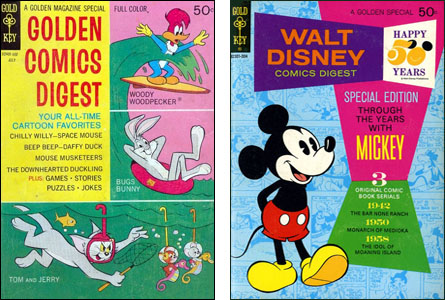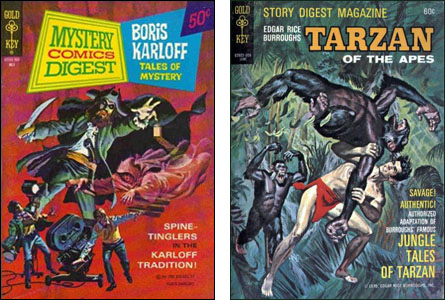
Back in the sixties, Western Publishing Company (Gold Key Comics) began to have increasing problems getting their comics distributed. All the publishers were having this problem but it was most acute for Western. DC and Charlton owned their own distribution companies so they were able to push a little harder and at least they were paying their distribution fees to themselves. Marvel was distributed by DC until they jumped to a company owned by the same conglomerate that owned Marvel. The other companies, like Archie and Harvey, were hurt…but they (like DC and Marvel) were largely using their comic book publishing as a loss leader for the merchandising of the properties depicted in their comics. DC didn't consider it fatal when sales on the Batman comic went down since they were making money off Batman t-shirts and games and spatulas and such.
Western, however, did not control their own distribution, nor did they make any money off the merchandising of most of the characters in their comics. They had the Disney properties, Bugs Bunny, Woody Woodpecker, etc. — all properties owned by others. The few comics Western did own did not yield any real licensing money.
So they began hustling to find a way to sell comics in other venues — bookstores, toy stores, anywhere. They explored other forms of distribution and to this end began experimenting with different sizes and shapes of comics. Long before anyone at DC or Marvel was ready to break from the conventional funny book format, Western tried oversize comics, paperback comics, comics bundled in plastic bags and a few other ideas. Some received limited test marketings or never made it that far. Others came out and were widely ignored. The one thing that did well for a time was the digest comic — a little paperback about 6 and 3/4" tall with (usually) a little under 200 pages. Today, the Archie people have done quite well with their digests and the rumor is that other companies are gearing up to try them — especially for "funny" comics, whose less-detailed pages suffer less when reduced in size.

I don't believe this format will ever catch on big. Archie's success with it has largely been a matter of skillful (and expensive) marketing. They've managed to get excellent display in airports and at supermarket checkout counters. It often costs a lot of money to get your wares into those locations…which can accept very limited amounts of product. I also think there's a fundamental problem with the format in that its very size makes comics look cheap and unimportant.
One thing that some publishers seem to have missed is a lesson that Western learned when they were the only publisher doing them. When the digests were successful, they were only successful in stores that were completely isolated from regular-size comics. If a store had both sizes, no one bought the digests. If a store didn't carry regular-size comics but the one across the street did, no one bought the digests. I forget the actual sales numbers I was shown but it was something like this: When no regular-sized comics could be purchased nearby, a store that carried the digests might expect a 75% sale, which was very good. If the same store had regular comics, the digests would sell 10%. Therefore, Western was in the odd position of trying very hard not to distribute one of their products to some outlets. This they did until the digests died out in the early-seventies — about the time DC and Marvel were both enjoying some success with larger-than-normal comics. Western's distribution was crashing anyway by then but I've often wondered if the appearance of the tabloid "super-size" comics made the digests just look so puny that they helped finish them off.